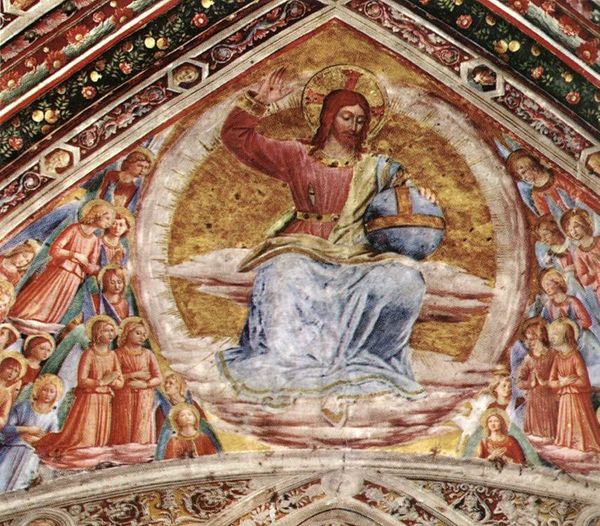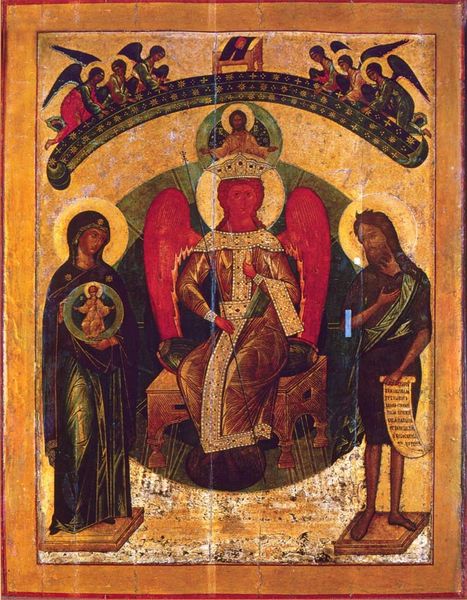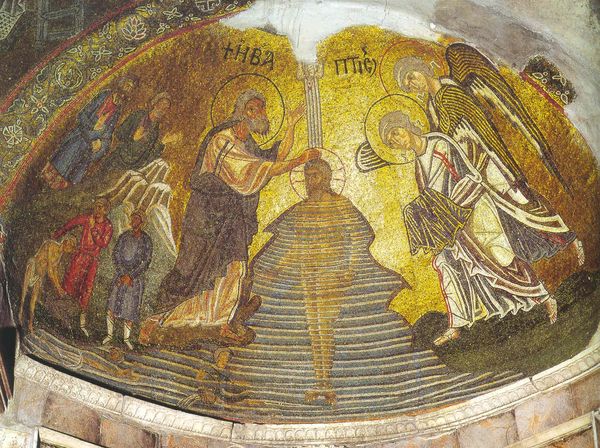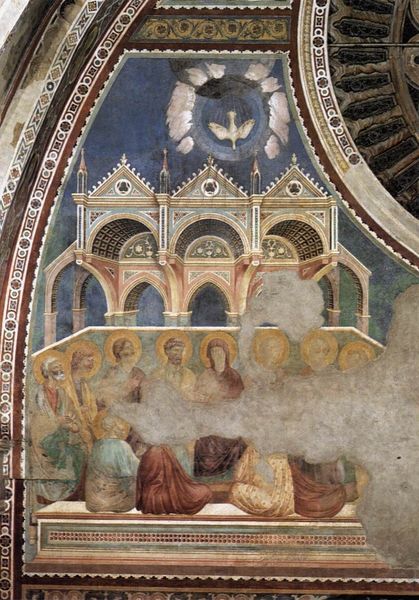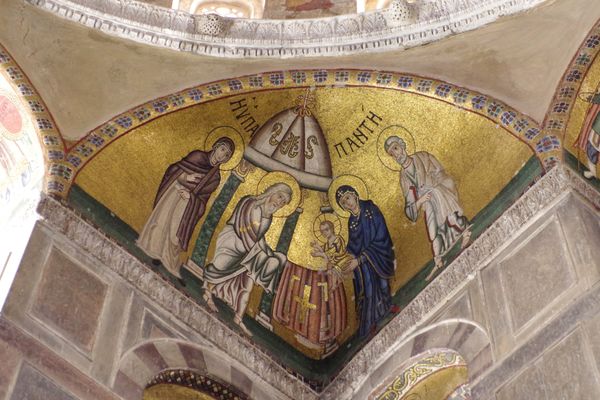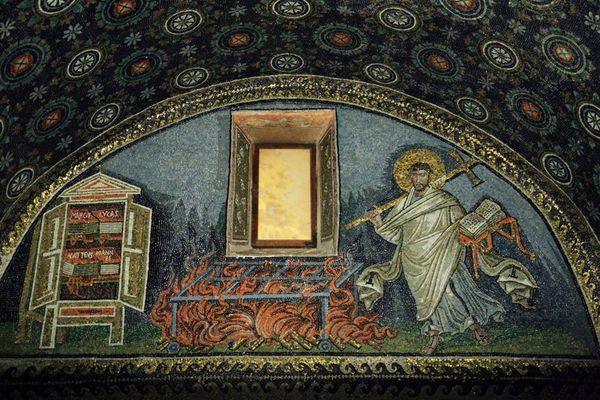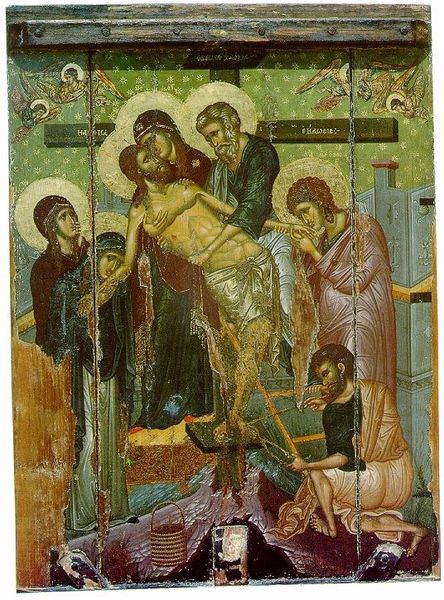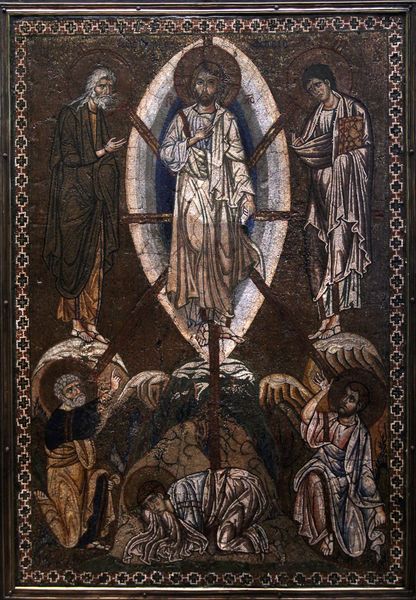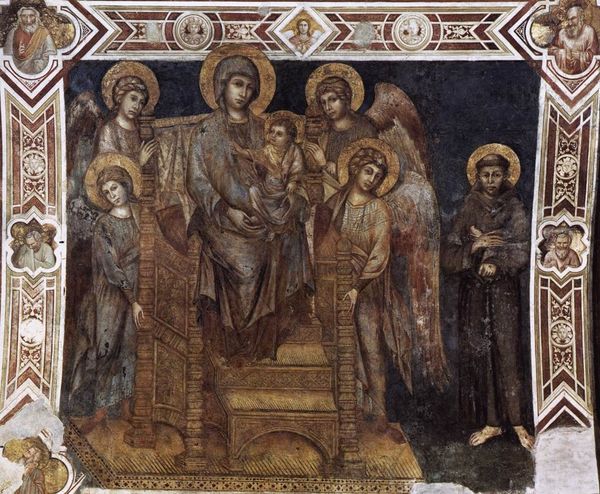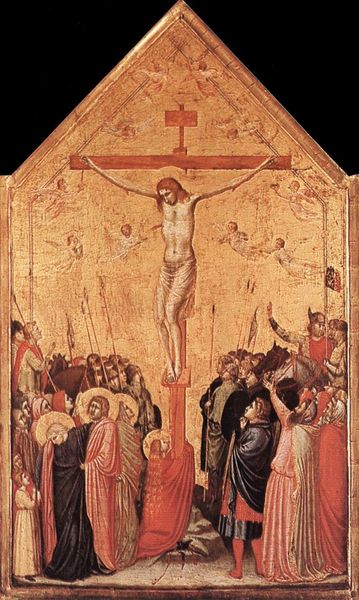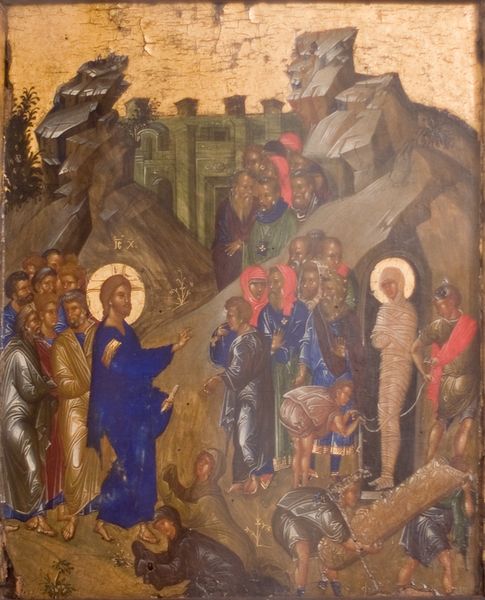
mosaic
#
mosaic
#
byzantine-art
#
medieval
#
narrative-art
#
figuration
#
geometric
#
history-painting
Copyright: Public domain
Editor: We’re looking at "Descent from the Cross," a mosaic created around 1056 in Nea Moni of Chios, Greece. The emotion radiating from the figures is striking, even across nearly a thousand years. What cultural meanings were being communicated in this depiction? Curator: Indeed. Consider that Byzantine art, heavily intertwined with the Church, served as a powerful tool. This mosaic isn't just a depiction of grief; it's a statement of doctrine and imperial authority. Its placement within the church dictated how the congregation would understand it. Editor: How so? Curator: This scene, meticulously crafted in mosaic, would have been positioned to visually narrate the events following the crucifixion. Remember that mosaics weren't merely decorative; they were didactic. This artwork reinforces the Orthodox faith. But the artistic choices -- the figures' exaggerated grief, the somber tones -- tap into shared human emotions. Why do you think the commissioners would wish to blend these purposes of reinforcing doctrine while also stirring raw emotion? Editor: Perhaps to create a more visceral connection to faith. So the political authority is the the church wanting to make faith something one *feels*, not just something one knows? Curator: Exactly! It speaks volumes about the Church’s agenda and how it uses visual language to shape its narrative within the Byzantine Empire. This blend ensured that their religious doctrine resonated powerfully. Editor: Fascinating. I hadn’t fully grasped the level of intentionality embedded in this mosaic. Curator: Analyzing art from the past allows one to have a greater understanding of the people and how they were governed.
Comments
No comments
Be the first to comment and join the conversation on the ultimate creative platform.
